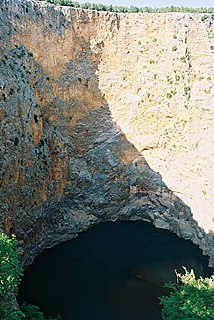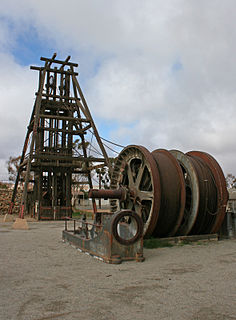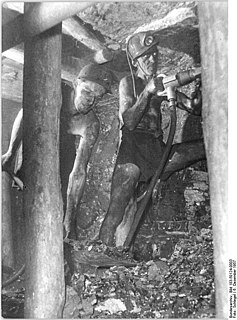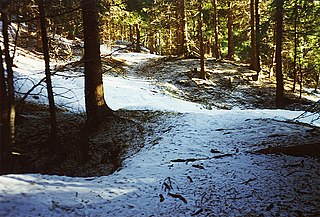 W
WA cave-in is a collapse of a geologic formation, mine or structure which may occur during mining, tunneling, or steep-walled excavation such as trenching. Geologic structures prone to spontaneous cave-ins include alvar, tsingy and other limestone formations, but can also include lava tubes and a variety of other subsurface rock formations. Glacier caves and other ice formations are very prone to collapse from exposure to warm temperatures or running water.
 W
WChat is fragments of siliceous rock, limestone, and dolomite waste rejected in the lead-zinc milling operations that accompanied lead-zinc mining in the first half of the 20th century. Historic lead and zinc mining in the Midwestern United States was centered in two major areas: the tri-state area covering more than 2,500 square miles (6,500 km2) in southwestern Missouri, southeastern Kansas, and northeastern Oklahoma and the Old Lead Belt covering about 110 square miles (280 km2) in southeastern Missouri. The first recorded mining occurred in the Old Lead Belt in about 1742. The production increased significantly in both the tri-state area and the Old Lead Belt during the mid-19th century and lasted up to 1970.
 W
WA sinkhole, also known as a cenote, sink, sink-hole, swallet, swallow hole, or doline, is a depression or hole in the ground caused by some form of collapse of the surface layer. Most are caused by karst processes – the chemical dissolution of carbonate rocks or suffosion processes. Sinkholes vary in size from 1 to 600 m both in diameter and depth, and vary in form from soil-lined bowls to bedrock-edged chasms. Sinkholes may form gradually or suddenly, and are found worldwide.
 W
WGlückauf is the traditional German miners' greeting. It describes the hope of the miners: "es mögen sich Erzgänge auftun" which is short for "Ich wünsche Dir Glück, tu einen neuen Gang auf", because, when mining for ore, without prospecting, no-one could predict with certainty whether the miners' work would lead to a reward. The greeting also expressed the desire that miners would return safely from the mine after their shift.
 W
WA headframe is the structural frame above an underground mine shaft so as to enable the hoisting of machinery, personnel, or materials.
 W
WA headframe is the structural frame above an underground mine shaft so as to enable the hoisting of machinery, personnel, or materials.
 W
WA hewer is a miner who loosens rock and minerals in a mine. In medieval mining in Europe a Hauer was the name given to a miner who had passed his test (Hauerprüfung) as a hewer.
 W
WShaft mining or shaft sinking is excavating a vertical or near-vertical tunnel from the top down, where there is initially no access to the bottom.
 W
WAn ore shoot is a mass of ore deposited in a vein. The ore shoot consists of the most valuable part of the ore deposit. An ore shoot is the area of concentration containing primary ore along the veins present in the rocks.
 W
WIn mining, overburden is the material that lies above an area that lends itself to economical exploitation, such as the rock, soil, and ecosystem that lies above a coal seam or ore body. Overburden is distinct from tailings, the material that remains after economically valuable components have been extracted from the generally finely milled ore. Overburden is removed during surface mining, but is typically not contaminated with toxic components. Overburden may also be used to restore an exhausted mining site during reclamation.
 W
WA Pinge or Binge ("binger") is the name given in German-speaking Europe to a wedge-, ditch- or funnel-shaped depression in the terrain caused by mining activity. This depression or sink-hole is frequently caused by the collapse of old underground mine workings that are close to the Earth's surface. Unlike natural landforms, a Pinge is a direct result of human activity. The term has no direct equivalent in English, but may be translated as "mining sink-hole", "mine slump" or, in some cases, as "glory hole".
 W
WThickness in geology and mining refers to the distance across a packet of rock, whether it be a facies, stratum, bed, seam, lode etc.